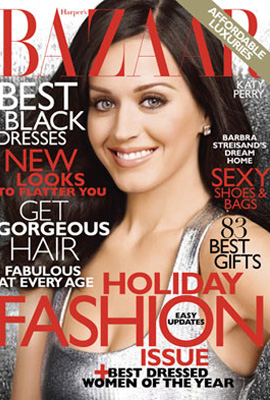
December 2010
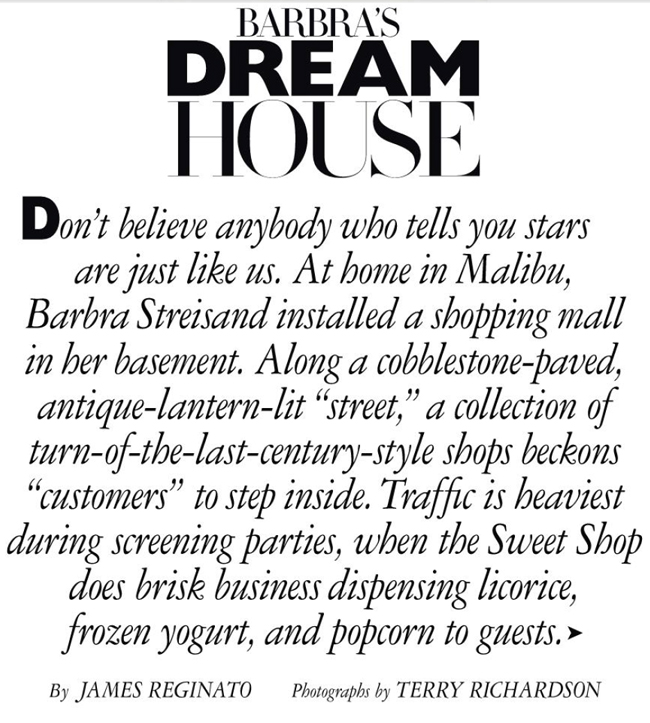
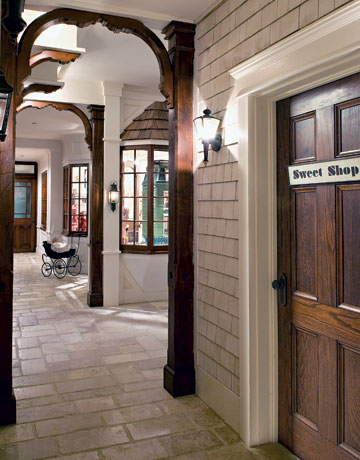
Before going out to a dinner party or a friend’s birthday, Streisand likes to duck into the Gift Shoppe to pick up a present—a soap dish or a pair of candlesticks—and tie it up with pretty ribbons at the wrapping table.
Other emporiums include the Antique Shop, the Antique Clothes Shop, and Bee’s Doll Shop (in Front of which she thoughtfully installed a bench for men to sit while the ladies are inside). The only items missing are the cash registers.
“You can do that if it's your own mall," Streisand explains to me on a September afternoon. Clad in black from head to toe—chenille cap, tank top, cashmere sweater, stretch pants, and boots—she is perched on a sofa in a sprawling 49th-floor suite atop the Sheraton New York, where she is attending the Clinton Global Initiative.
After a day spent downstairs with “Shimon,“ “Bill,” and other world leaders with whom she is on a first-name basis, Streisand, 68, is taking a break to snack on some cheese and talk about her new book, My Passion for Design, out now. Lushly illustrated with hundreds of photographs, most of which were taken by Streisand, it lovingly documents the dream homes she spent almost two decades creating.
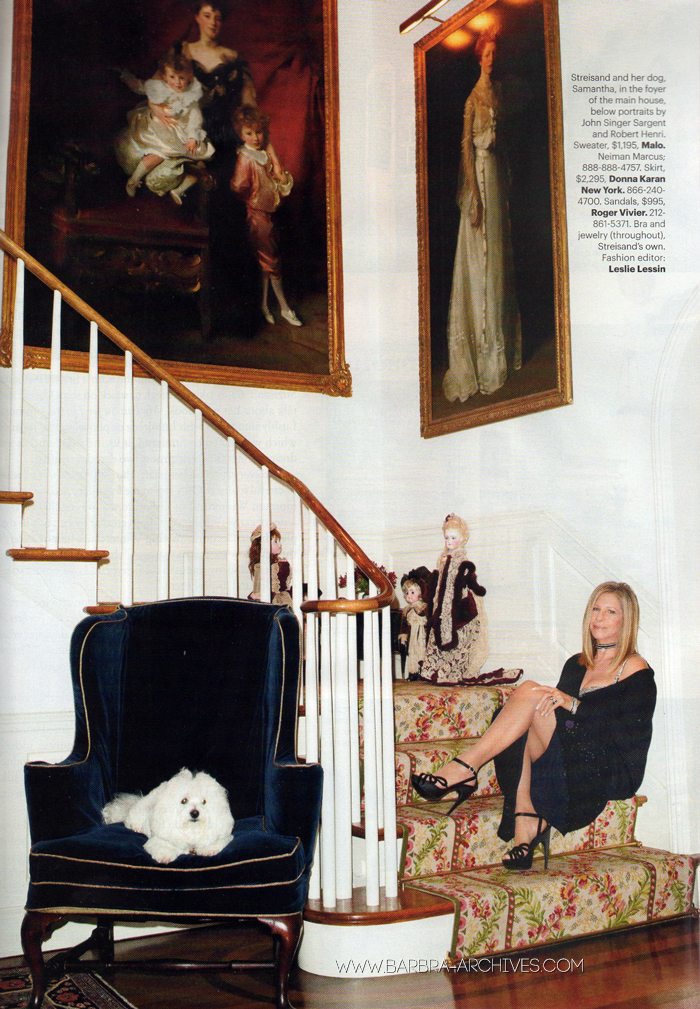
Like everything on her estate, the shops grew out of years of careful research. On a trip to the legendary decorative-arts museum Winterthur in Delaware, she was fascinated by a series of early-19th-century shops created by curators to display their collections. “Seeing Winterthur's indoor street, I thought how ingenious that was,” she remembers. “Instead of just storing my things in the basement, I can make a street of shops and display them.”
(Being Barbra Streisand, however, she constructed hers in her own way. After filming wrapped on Meet the Fockers in 2004, for example, she asked the production designer what he was going to do with a pair of paneled doors. “Throw them out,” he said. “I'll take them,” she responded.)
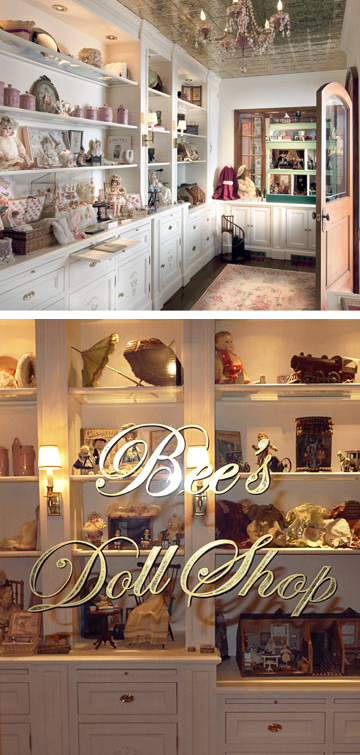
While most of the stores offer stock that comes and goes, the Antique Clothes Shop is truly a museum. Paneled in lavender-painted boiserie, it displays some of the star’s most famous costumes, including her “People”-number gown from the Broadway production of Funny Girl, made of green chiffon over pink silk, with little beaded balls on the sleeves. It’s “quirky, like the character,” Streisand writes in the book.
But despite her passion for her high street, Streisand confesses she does not always enjoy shopping. “I look at Fashion today and I don’t get it,” she says. “All those prints. I should have lived in another era.... Maybe I did. I still like my antique clothes. There are some good things, but it’s not really my interest these days.
“My friend Donna [Karan] sends me things. I wear a lot of her clothes," she continues. “Or Renata, my assistant for 37 years, will find something for me when she is shopping for herself. Or if I see someone on the street wearing something I like, I stop them and say, ‘That’s nice. Where'd you get that?’ Then I may buy it. Not from them, of course. Later.”
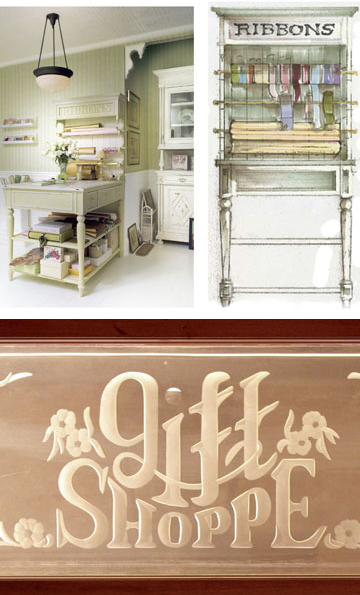
She describes what she does wear in one word: “Black.” "I like simple things. Elastic waists,” she adds, laughing, “so I can eat."
Right on cue, Streisand passes me a cracker with a slice of Camembert. “Have some cheese,” she says in a Jewish-mother command tone.
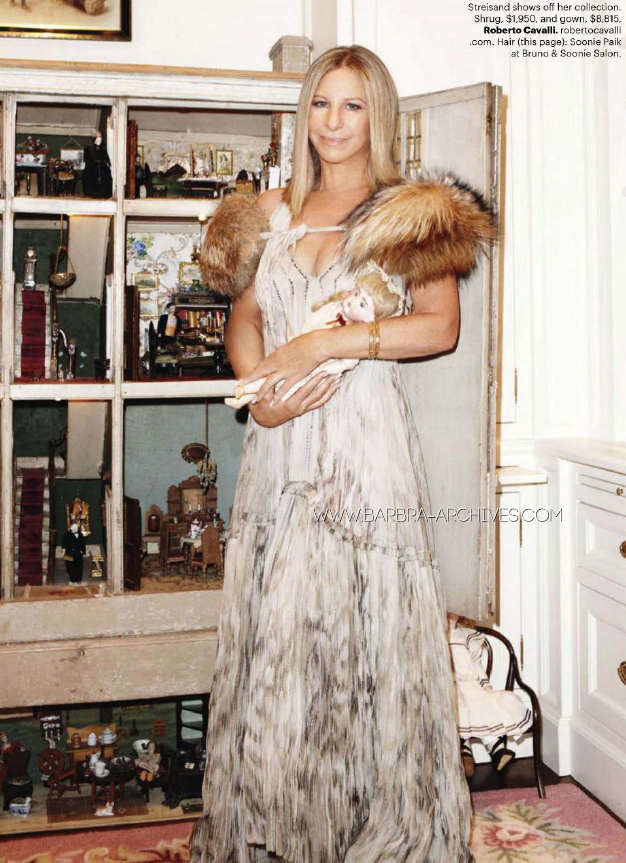
Countless unauthorized volumes have been written about Streisand, but My Passion for Design is her first book. When I compliment her on the books surprisingly personal nature, however, she winces. “You think I gave away too much?“ she asks. “I was trying to avoid any kind of autobiography. That will come later.”
In fact, she's considering a memoir. “I think it’s almost time," she says. "These books about me are so stupid. When someone sends me one of them, if I have time, I look at the first page and I can tell whether or not the writer did his research. A minor detail tells a lot. Did he even visit the street I lived on? If he did, he wouldn’t write that I used to take the BMT into the city when it was the IRT.
“It’s silly, and yet all these fabricated and sloppy stories become your bio,” she continues. “I’m interested in the truth, and unauthorized biographies are not. Yes, I would like to correct those errors someday.”
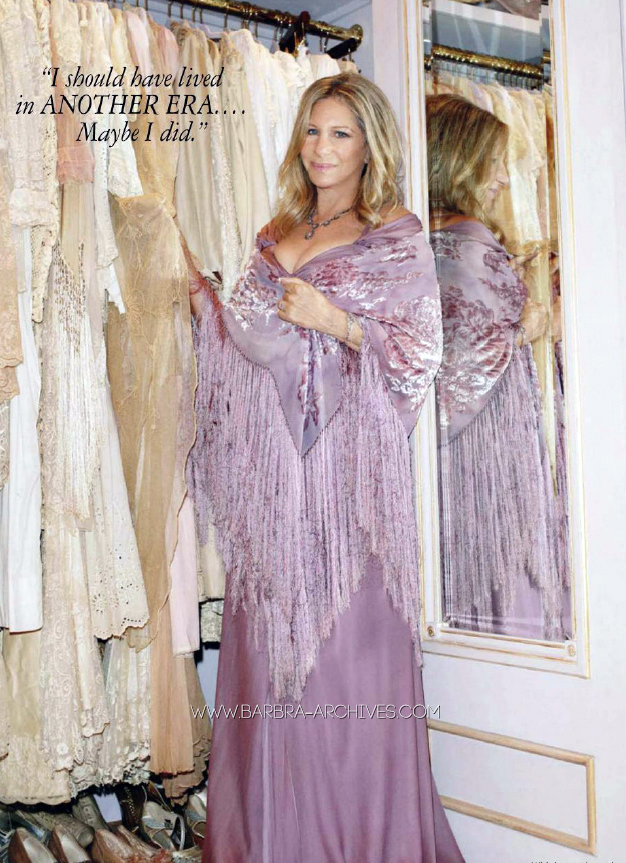
But since design has been such an integral part of Streisand’s life, this book was bound to be revealing. Among other things, we learn that Streisand and her husband, James Brolin, typically spend mornings in bed. She reaches first for her laptop, on which she often trades stocks. (“lt’s a way of gambling without having to get dressed.”) He breakfasts sparely on fruit, but she prefers “more substantial” fare, like pancakes made with spelt or buckwheat flour.
Throughout our conversation, doors open and close as Streisand personnel dart through the suite. At one point, a door opens and Streisand, who has been speaking in a very controlled manner and sitting quite still, stops mid sentence and jumps up: "My baby! I haven’t seen you for hours!” she shrieks with joy.
Brolin? No. A white ball of fluff is suddenly bouncing wildly on the couch and licking her face. lt’s Samantha, Streisand's coton de Tulear. “I love you, l love you. Did you miss me?” she coos as she rushes over to pick up her dog. “She’s our daughter,” continues Streisand. "She’s brilliant. She understands English."
Some time later, another door opens and it is Brolin, striding in with his eyes glued to his phone. He glides quietly to the far corner of the room, but Streisand still minds her man. “Want some cheese, honey?” she says.
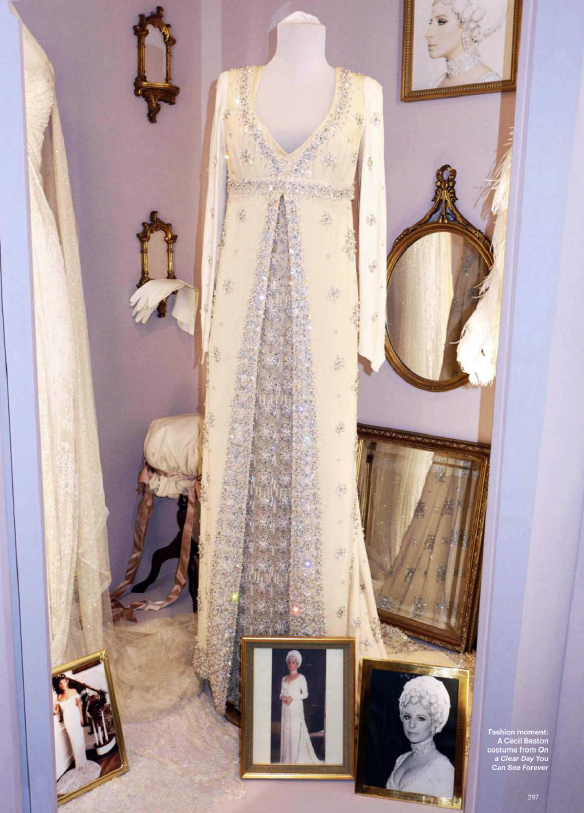
Perhaps the key to marital bliss is letting your husband handle his domestic space. “He has his own rooms that he's in charge of: his office, his bath, his workshop,” Streisand reports. “They are more masculine. But the real difference is, he takes his time. He’s not compulsive like me,” she says with a shrug and a hint of a smile. “I need to find that piece of hardware now. I need instant gratification."
And Streisand gets her fix by decorating. “I also have intense relationships with furniture ... probably because we practically had none when I was growing up,” she writes in her book. Only when she was eight, when her family moved into a housing project on Newkirk Avenue in Brooklyn, did they get a sofa, an ugly nubby olive-green thing that her mother covered completely in plastic. Now she feels a sense of loss when she misses out on an item at auction. “Well, perhaps it has something to do with the sense of loss of a parent," says Streisand, whose father died suddenly in 1943 when she was 15 months old. “There is always a possibility of getting an object back. There is no possibility of getting a parent back.”
There's no doubt that Streisand has brought treasures—including pieces by Gustav Stickley, Charles and Henry Greene, and Charles Rennie Mackintosh—by the truckload back to her three-acre spread in Malibu. A veritable village, it includes the rustic mill house, which boasts a 14-foot-high, 4,000-pound water wheel; Grandma's house, a cozy cottage filled with quilts; and the main house, a rambling yet elegant white mansion. But the heart of the property is the barn, a giant U-shaped clapboard structure flanked by a stone silo. A two-tiered central great room inside leads to a show-house-like collection of period rooms: the Federal lounge, the Greene & Greene library, the Stickley office, the art-nouveau bathroom, the napping room, and, yes, that street of shops.
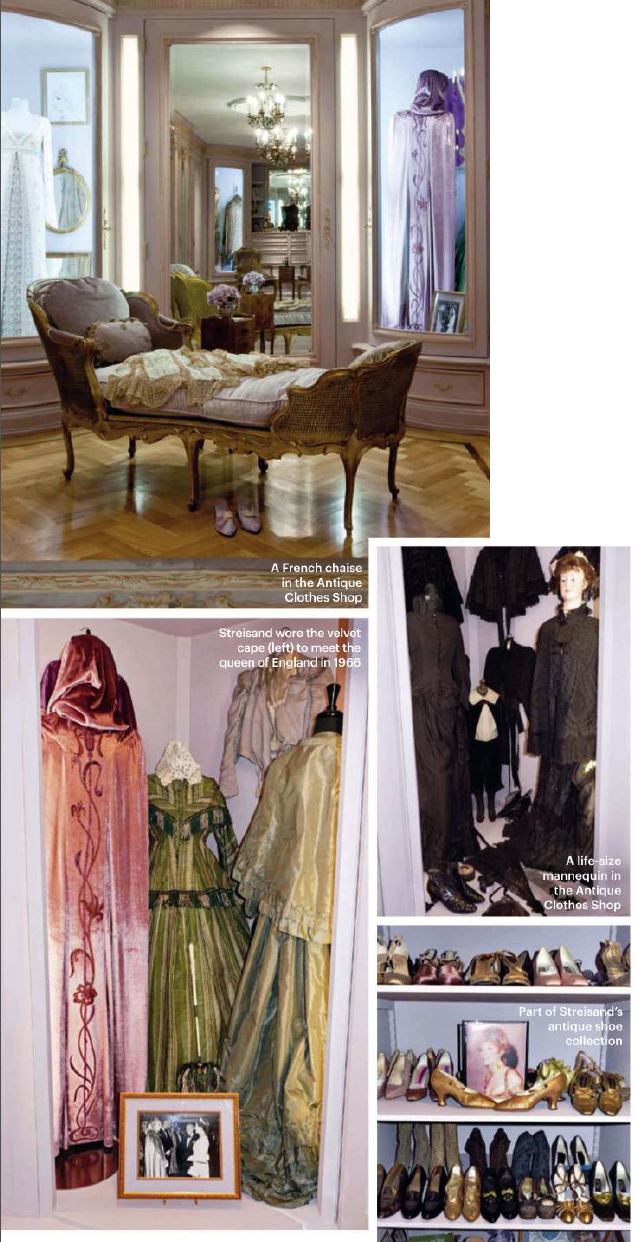
This all began in 1984, when she glimpsed and fell in love with the main house, which was not far from the ranch she then lived on. When its owners refused Streisand’s offer to buy it, she purchased two adjacent properties. But the owners split up and Streisand was able to buy the house in 1995.
That’s when she starting coming up with her “script” for the property. She imagined a postcolonial family that settled on the property in 1790 and built a mill where they ground their wheat. As they prospered, they built a farmhouse, which grew again substantially in 1904, when descendents added two wings. If anyone finds this tale a stretch, Streisand doesn’t care. “It worked for me,” she says.
To accurately represent this, she personally scoured much of the Northeast for seemingly every available weathered beam she could buy. "When we ran out of the right size beams, we had to send to upstate New York for some more,“ she says. “In most new ‘old’ houses, beams that are new but made to look old never do look old. I want old. Really old. I don’t want to fake it.”
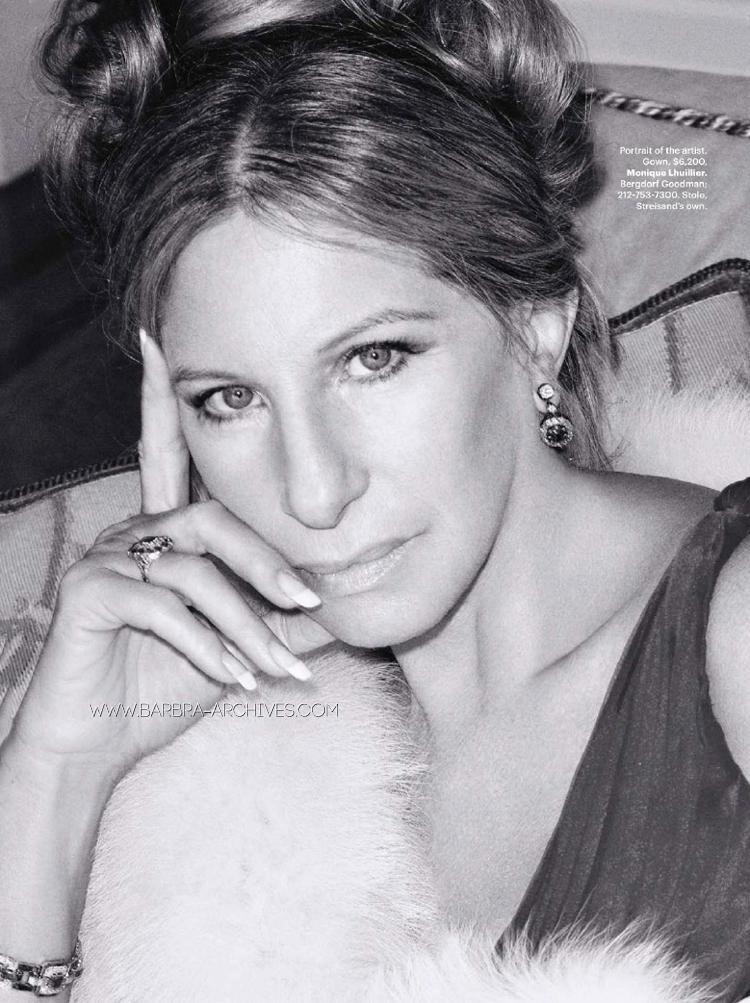
She also spent days schlepping between showrooms in the Pacific Design Center, until one day paparazzi ambushed her. “Me and my shopping bags,” Streisand moans.
Despite Streisand’s Herculean efforts to create these buildings, however, she’s hardly slept in any of them except the main house. “We treat the barn like a B&B, as if we went away for the weekend, but we don't have to drive.“ They’re “art projects,” she says.
Interestingly, she doesn't listen to her albums or watch her movies after they are finished, either. Even Yentl, Funny Girl and The Way We Were? Yup. “It’s like living in the past,” she explains. “I like to be in the present.”
But this is not to say she does not visit her houses often. There is the tour, a precisely mapped, two-hour visit Streisand leads for lucky friends.
Recent visitors include new pal Jennifer Aniston, who posed as Streisand for September's Bazaar: “I was surprised and flattered that Jennifer wanted to interpret my style with those photos. It took me back in time,” she says. “Funny, I hadn’t worn that cap from What's Up, Doc? since 1973. They're back in style now. So I pulled a denim cap from my stash and wore it to a friend’s party.”
Close friend Karan, who has been on the tour “[at least] a few times,” reports the experience is well worth repeating. “It's going on the most extraordinary journey. Barbra sees every single detail, and all the connections between them, so you are able to see into her soul.”
At the moment, what’s closest to Streisand’s soul is her rocking chair. “Last Sunday before I left for New York,” she says, “I sat in my rocking chair for 10 minutes on the Stickley porch, looking at the water wheel, the pond—enjoying it I think for the first time.” And then the best idea of all occurred to her: “I thought, Oh, my God, this will be really nice when we get older. ...We could sit here and rock.”
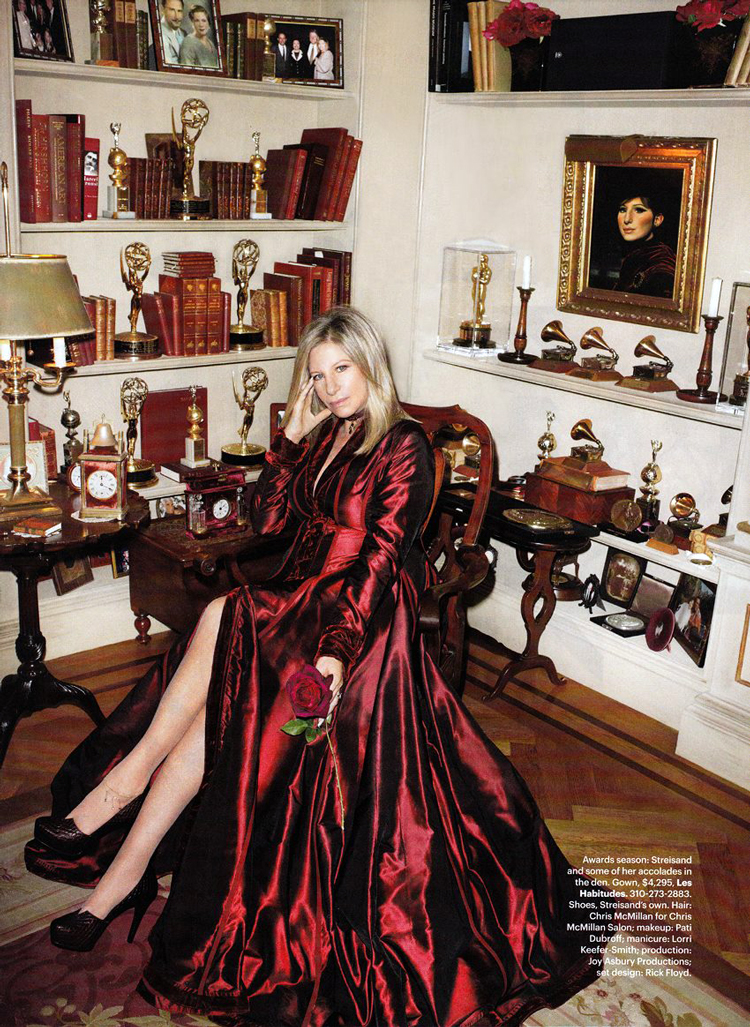 Terry Richardson Outtakes
Terry Richardson Outtakes

Below: Terry Richardson poses with Streisand.
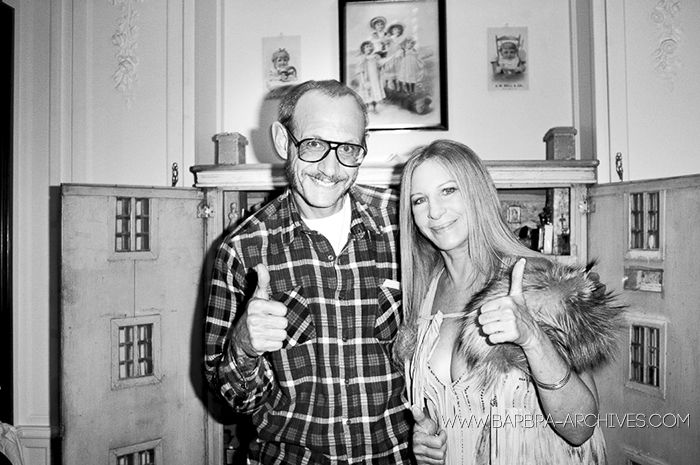
End.
[ top of page ]
